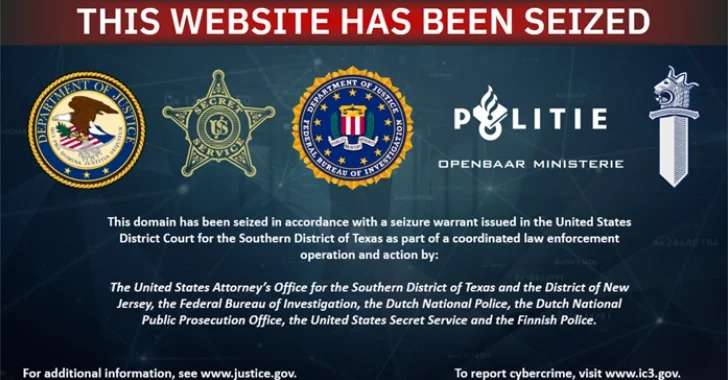The Hidden World of Malware Crypting
Imagine a digital arms race where cybercriminals constantly refine their malware to slip past antivirus defenses undetected. This isn’t science fiction—it’s the reality of “crypting” services, a shadowy industry that helps hackers evade security software.
On May 27, 2025, the U.S. Department of Justice (DoJ) announced a major victory in this battle: the seizure of four domains (AvCheck[.]net, Cryptor[.]biz, Crypt[.]guru, and another undisclosed site) that provided crypting tools to cybercriminals. This takedown was part of Operation Endgame, a multinational effort involving the FBI, Dutch, Finnish, French, German, Danish, Portuguese, and Ukrainian authorities.
But what exactly are crypting services, and why does shutting them down matter? Let’s dive deep into this cybercrime underworld and what this crackdown means for the future of cybersecurity.
What Are Crypting Services? (And Why Do Hackers Love Them?)
The Malware Evasion Game
Crypting, in simple terms, is the process of obfuscating malware to make it invisible to antivirus programs. Think of it like a burglar wearing an invisibility cloak to bypass security cameras.
Cybercriminals use crypting services to:
-
Modify malware code to avoid signature-based detection.
-
Test their malware against multiple antivirus engines (like a hacker QA lab).
-
Distribute undetectable payloads (ransomware, spyware, trojans).
The Role of Counter-Antivirus (CAV) Tools
The seized domains didn’t just offer crypting they provided Counter-AntiVirus (CAV) tools, which allowed hackers to:
✔ Scan malware against 26+ antivirus engines (to see if it gets flagged).
✔ Check domains/IPs against blocklists (to avoid blacklisting).
✔ Continuously refine malware until it’s fully undetectable.
Dutch authorities called AvCheck one of the largest CAV platforms in the cybercrime world, making this takedown a significant blow to malware developers.
How Law Enforcement Took Down the Crypting Empire
Operation Endgame: A Global Cybercrime Sweep
This seizure wasn’t a one-off event it was part of Operation Endgame, an ongoing international crackdown launched in 2024 targeting:
-
Botnets (networks of infected devices).
-
Malware-as-a-Service (MaaS) providers.
-
Ransomware distribution networks.
Previous Operation Endgame actions included:
Disrupting Lumma Stealer (a notorious info-stealing malware).
Taking down DanaBot (a banking trojan).
Seizing hundreds of malicious domains/servers.
Undercover Stings & Digital Forensics
To build their case, law enforcement:
-
Posed as cybercriminals to purchase crypting services.
-
Analyzed the tools to confirm their use in malware distribution.
-
Traced financial transactions to identify operators.
FBI Special Agent Douglas Williams summed it up:
“Cybercriminals don’t just create malware—they perfect it for maximum destruction. These services helped them bypass the world’s toughest security systems.”
The Aftermath: What Happens Now?
Impact on Cybercrime
While this takedown is a win, the cybercrime ecosystem is resilient. Experts predict:
-
New crypting services will emerge (likely on the dark web).
-
Malware authors will adapt (using new obfuscation techniques).
-
Law enforcement will escalate (more seizures, arrests coming).
PureCrypter: The Next Big Threat?
Even as these domains fall, new threats rise. Cybersecurity firm eSentire recently exposed PureCrypter, a Malware-as-a-Service (MaaS) tool sold on Hackforums[.]net for:
-
$159 (3-month access)
-
$399 (1-year license)
-
$799 (lifetime subscription)
PureCrypter distributes Lumma Stealer and Rhadamanthys malware via Telegram bots, proving that the crypting industry won’t disappear overnight.
How to Protect Yourself from Crypted Malware
While law enforcement fights cybercrime, individuals and businesses must stay vigilant:
For Everyday Users:
Use reputable antivirus software (and keep it updated).
Avoid suspicious downloads/links (especially from Telegram, Discord, shady forums).
Enable multi-factor authentication (MFA) everywhere.
For Enterprises:
Deploy advanced threat detection (AI-based behavioral analysis).
Conduct regular security audits.
Train employees on phishing/scam tactics.
A Step Forward, But the Battle Continues
The seizure of these crypting domains is a major milestone in disrupting cybercrime but it’s not the end. As long as malware exists, criminals will seek new ways to hide it.
Discover more from CyberAwareHub
Subscribe to get the latest posts sent to your email.

